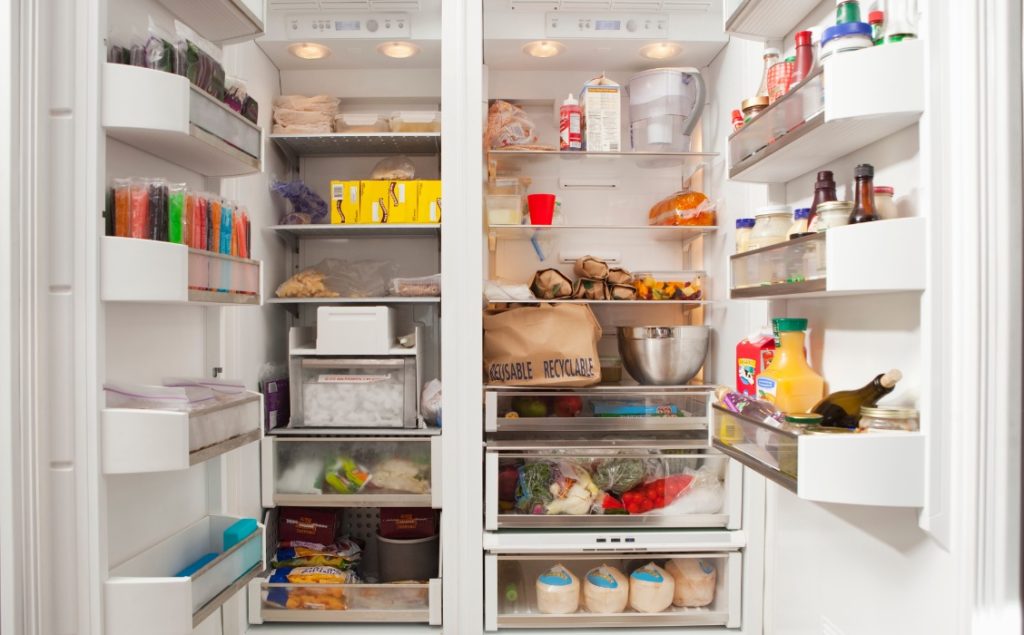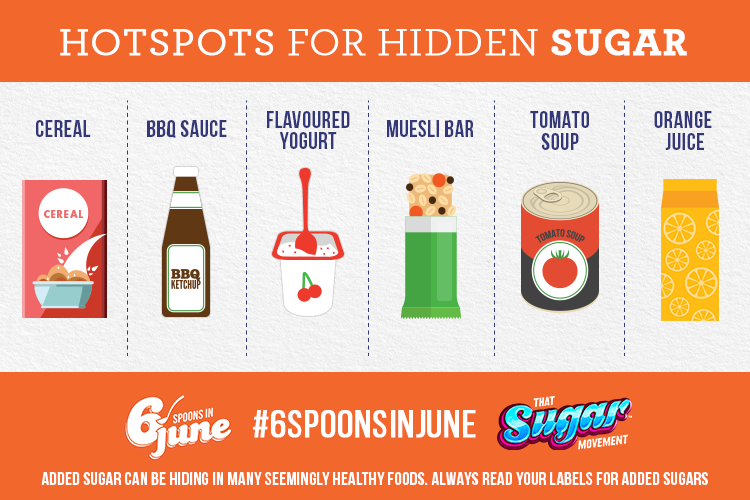Blog
Hotspots for added sugar

Identifying added and free sugars by learning how to read labels takes a little practice, though worth doing. By building awareness of where and how much added sugar is hiding in food and drink, we are less likely to overconsume.
This is important as too much of the sweet stuff increases the risk for tooth decay, type 2 diabetes, weight gain, heart disease and more. Hence recommendations are to limit intake to 6 teaspoons (25 grams) per day for health benefits.
The trouble is high amounts of added sugars and sweeteners are found in products other than the obvious sweet and discretionary stuff. Many of our savoury favourites and seemingly healthy foods contain added sugars, too. It is estimated at least 70% of packaged products found in Australian supermarkets contain added sugar.
With that in mind, we have listed below some of the key culprits of sugary excess. We encourage you to look carefully through your pantry and fridge to identify and replace them with low-sugar alternatives!
(Note: In doing so, let’s not be wasteful. If you have products high in added sugars in your cupboard or fridge, slowly replace them over time.)
Seeking added sugars in your fridge and pantry
Cereal
Many cereal boxes have wonderful health claims, even decent Health Star Ratings (though this system is flawed and desperately needs a review). Yet look at the ingredient list for added sugar – this breakfast staple is often overly sweet.
Opt for those without added sugar, such as whole oats. Boost nutritional value by adding a dollop of your favourite type of unsweetened yoghurt and sweeten naturally with fresh fruit. Alternatively, try a savoury breakfast!
Low-fat flavoured yoghurt
Many low-fat products, including yoghurt, are notorious for having sugars added to make the product more palatable, having had the fat removed. Be sure to check the ingredient list for added sugars or sweeteners.
We suggest choosing unflavoured and plain yoghurts, whether dairy, coconut or otherwise. Add healthful sources of flavour using spices or foods such as cinnamon, vanilla, banana, mango or berries.
Muesli bars and lunchbox snacks
Considered the healthy staple of the lunchbox, muesli bars pack a sugary punch. Sometimes more than a chocolate bar! Similarly, fruit rolls, jelly, snack bars, fruit snacks and more are often high in added sugar and not a nutritious energy source to get us (or our kids) through the day.
Sub these out for sugar-free or low-sugar alternatives. Better yet, make your own snacks! It could be a piece of fresh fruit; nut, seed, coconut chip scroggin mix; cheese and carrot sticks; veggie sticks and hummus; sliced apple with 100% nut butter; or our yummy banana bread balls.
Drinks and juice
Seemingly healthy breakfast drinks, flavoured milk and waters, sports drinks, iced teas, and some store-bought smoothies are typically high in free and added sugar.
Some juices contain similar amounts of free sugars as soft drinks. Yikes! While better than soft drinks, a typical store-bought juice is less healthy than once thought.
Fibre and other goodies in whole fruit are removed to make juice. Yet, it is nutrients such as fibre that limit how much we can eat and, therefore, how much (naturally occurring) sugar we consume in one hit – it is easier to drink the juice of five oranges than eat five!
The fibre slows the absorption of naturally occurring sugars, releasing these in manageable amounts and lessening the impact on our bodies.
Next time you want a flavoured drink, infuse water or plain soda water with slices of whole fruit and fresh herbs instead. Think apple slices and fresh mint or lemon slices and berries.
Love a smoothie? Make your own!
Low-fat mayonnaise and salad dressing
Be aware of how much added sugar you are unknowingly pouring over your otherwise healthy salad – they are in most store-bought options!
Instead, seek out low or no added sugar dressings or make your own! Try olive oil and a squeeze of lemon, or for something creamy, try a yoghurt or tahini-based dressing with a little garlic, lemon or vinegar and some finely chopped fresh herbs.
Sauces, stir-fry and pasta sauces, and soups
Ready-made soups, pasta and stir-fry sauces, and condiments such as tomato, barbecue and sweet chilli sauce can be loaded with added sugars.
We understand that finding ready-made sugar-free sauces is not easy, so keep in mind that a little added sugar isn’t the end of the world. However, we suggest trying to make your own tomato sauce or pesto. Instead of ready-made and packaged soups or pasta sauces, cook a big pot of soup or sauce from scratch to store in batches in the freezer, ready for a quick meal after a busy day. The Office Luncheon e-book has some tasty yet simple recipes to inspire some time in the kitchen.
Seek out the sugar!
With this knowledge, you can make choices that limit how much added sugar is hiding in food and drink in your home.
By Angela Johnson (BHSc Nut Med.)












